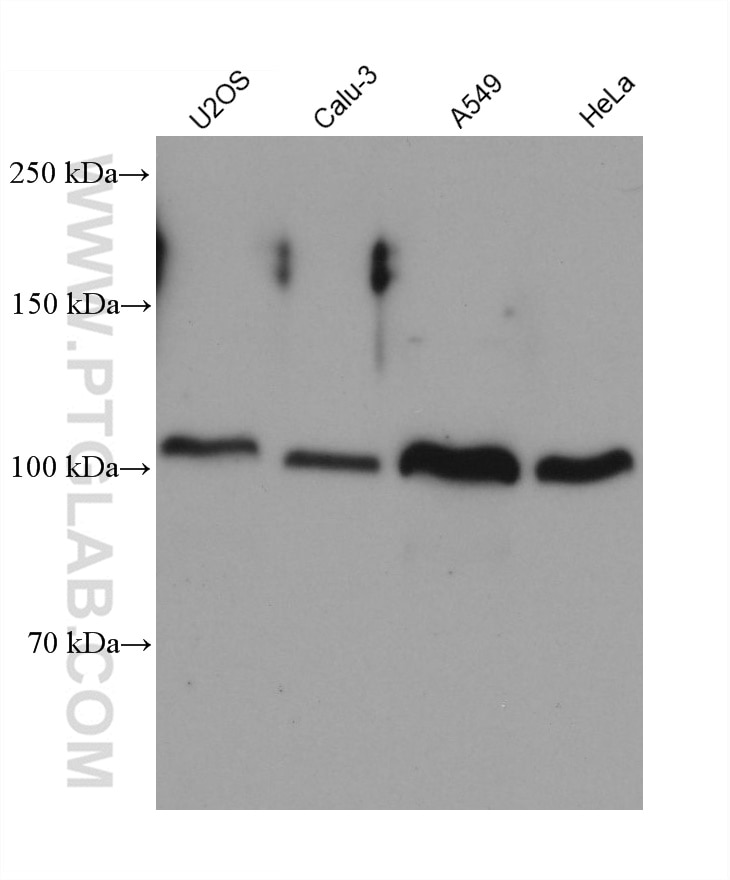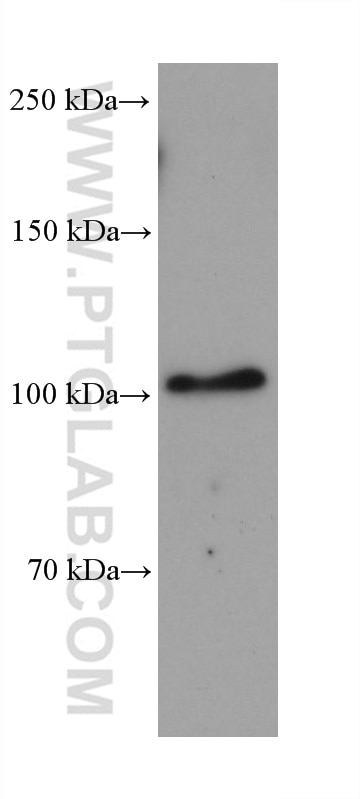Validation Data Gallery
Tested Applications
| Positive WB detected in | U2OS cells, NIH/3T3 cells, Calu-3 cells, A549 cells, HeLa cells |
Recommended dilution
| Application | Dilution |
|---|---|
| Western Blot (WB) | WB : 1:2000-1:10000 |
| It is recommended that this reagent should be titrated in each testing system to obtain optimal results. | |
| Sample-dependent, Check data in validation data gallery. | |
Product Information
68725-1-Ig targets ADAM17 in WB, ELISA applications and shows reactivity with Human, Mouse samples.
| Tested Reactivity | Human, Mouse |
| Host / Isotype | Mouse / IgG1 |
| Class | Monoclonal |
| Type | Antibody |
| Immunogen |
CatNo: Ag34022 Product name: Recombinant human ADAM17 protein Source: e coli.-derived, PET28a Tag: 6*His Domain: 693-824 aa of BC136783 Sequence: CVDKKLDKQYESLSLFHPSNVEMLSSMDSASVRIIKPFPAPQTPGRLQPAPVIPSAPAAPKLDHQRMDTIQEDPSTDSHMDEDGFEKDPFPNSSTAAKSFEDLTDHPVTRSEKAASFKLQRQNRVDSKETEC 相同性解析による交差性が予測される生物種 |
| Full Name | ADAM metallopeptidase domain 17 |
| Calculated molecular weight | 824 aa, 93 kDa |
| Observed molecular weight | 90-110 kDa |
| GenBank accession number | BC136783 |
| Gene Symbol | ADAM17 |
| Gene ID (NCBI) | 6868 |
| RRID | AB_3670417 |
| Conjugate | Unconjugated |
| Form | |
| Form | Liquid |
| Purification Method | Protein G purification |
| UNIPROT ID | P78536 |
| Storage Buffer | PBS with 0.02% sodium azide and 50% glycerol{{ptg:BufferTemp}}7.3 |
| Storage Conditions | Store at -20°C. Stable for one year after shipment. Aliquoting is unnecessary for -20oC storage. |
Background Information
The ADAMs (A Disintegrin And Metalloprotease) are multidomain transmembrane proteins. One of the first ADAMs implicated in membrane shedding is ADAM-17, which is shown to release the active form of tumor necrosis factor (TNF)-a from its precursor (PMID:18238782). ADAM17 is also named as CSVP, TACE. The full length protein has 9 glycosylation sites, a signal peptide, propeptide and 2 isoforms produced by alternative splicing.The 120-kDa form of ADAM-17 is expressed more frequently and at higher levels in primary breast carcinomas compared with normal breast tissue(PMID:17438092).
Protocols
| Product Specific Protocols | |
|---|---|
| WB protocol for ADAM17 antibody 68725-1-Ig | Download protocol |
| Standard Protocols | |
|---|---|
| Click here to view our Standard Protocols |


